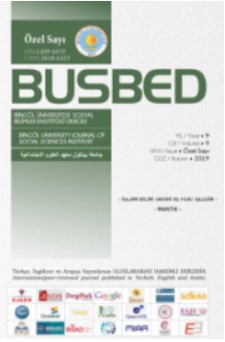KLASİK DÖNEM SONRASI OSMANLIDA BİLİM
POST-CLASSICAL PERIOD OTTOMAN SCIENCE
Author(s): Hamza AltinSubject(s): Education, Higher Education , History of Education, 18th Century, 19th Century, The Ottoman Empire
Published by: Bingöl Üniversitesi Sosyal Bilimler Enstitüsü
Keywords: Classical; science; Ottoman; scientist; works;
Summary/Abstract: Similar to other Islamic states, in the Ottoman Empire, there were noneducational institutions where people were trained in science. Masjids, mosques, outdoor prayer spaces, zawiyas, lodges, and convents and other religious institutions were used for this purpose. Other spaces such as mansions and libraries could be preferred by those who wanted to be trained in sciences. With the introduction of the modern scientific age in the Ottoman Empire is generally associated with the establishment of the Imperial School of Naval Engineering (Mühendishane-i Bahrı-i Hümayun). With some exceptions, the Ottoman scholar community did not oppose the reforms in the Ottoman state. On the contrary, the authors of certain important project proposals were the members of the scientific community. For instance, the project presented by Tatarcik Abdullah, who had the rank of the judge of the army, which was an important office in the scientific community, to Sultan Selim III had a significant impact on the reforms. Similarly, the reports presented by Keçecizade İzzet Molla, a member of the scientific community, to Mahmud II had an impact on the reforms introduced during the Reformation (Tanzimat) period that was initiated in 1839. Furthermore, the scientific community supported the modern educational institutions which were established during the 18th century.
Journal: Bingöl Üniversitesi Sosyal Bilimler Enstitüsü Dergisi (BUSBED)
- Issue Year: 9/2019
- Issue No: Sp. Issue
- Page Range: 137-158
- Page Count: 22
- Language: Turkish

